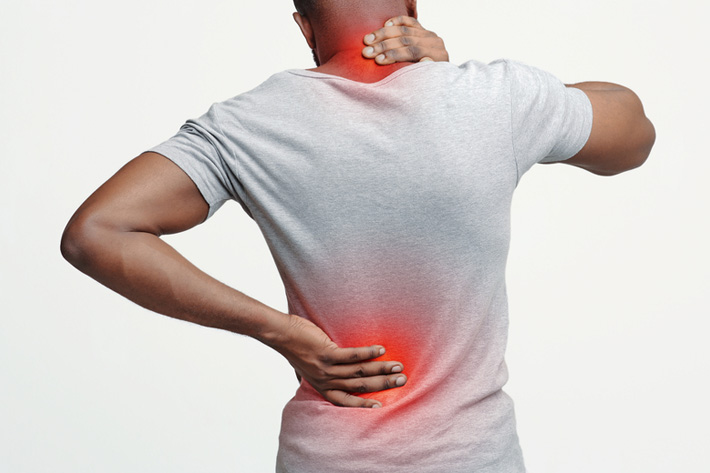Degenerative disc disease (DDD) is a condition characterized by the breakdown of the intervertebral discs in the spine. These discs act as cushions between the vertebrae and provide flexibility and
shock absorption. DDD is a common cause of back and neck
pain, especially in older adults, although it can affect people of all ages.
The primary cause of degenerative disc disease is natural wear and tear on the discs over time. However, other factors such as genetics, smoking, obesity, and injury can contribute to its development. The degeneration of the discs can lead to symptoms such as pain, stiffness, muscle
weakness, and nerve compression.
While degenerative disc disease cannot be cured, there are various treatment options available to manage the symptoms and improve quality of life. Here are some common approaches:
- Medications: Over-the-counter pain relievers like acetaminophen or nonsteroidal anti-inflammatory drugs (NSAIDs) may provide relief. In more severe cases, prescription medications like muscle relaxants or narcotics may be prescribed.
- Physical therapy: Specific exercises and stretches can help strengthen the muscles supporting the spine, improve flexibility, and relieve pain. Physical therapy may also include other modalities such as heat or cold therapy, ultrasound, or electrical stimulation.
- Lifestyle modifications: Maintaining a healthy weight, engaging in regular low-impact exercises like swimming or walking, practicing good posture, and avoiding activities that strain the spine can help alleviate symptoms and prevent further degeneration.
- Epidural steroid injections: Injections of corticosteroids into the space around the spinal cord can reduce inflammation and relieve pain in the affected area. This is typically done in combination with other treatment methods.
- Spinal decompression therapy: This non-surgical treatment involves stretching the spine using a traction table or a motorized device. It aims to relieve pressure on the discs and reduce pain.
- Minimally invasive procedures: In some cases, minimally invasive surgical procedures may be considered if conservative treatments have not provided sufficient relief. These procedures may involve removing part of a damaged disc or fusing two vertebrae together to stabilize the spine.
It’s important to note that treatment plans are individualized based on the severity of symptoms,
overall health, and other factors. Consulting with a medical professional, such as a primary care physician or a spine specialist, is crucial to
determine the most appropriate treatment options for a person’s specific condition.





